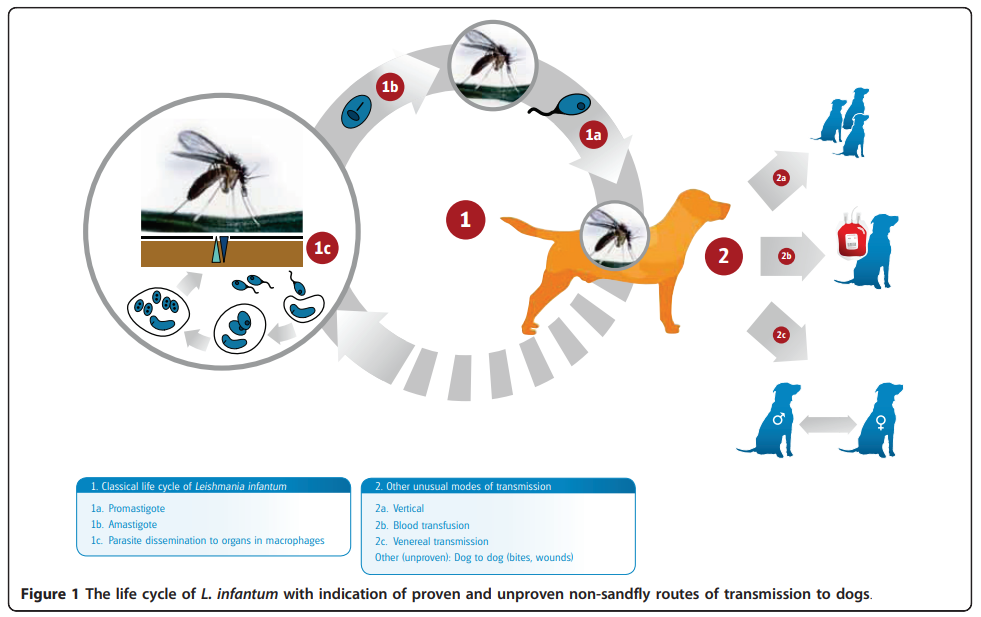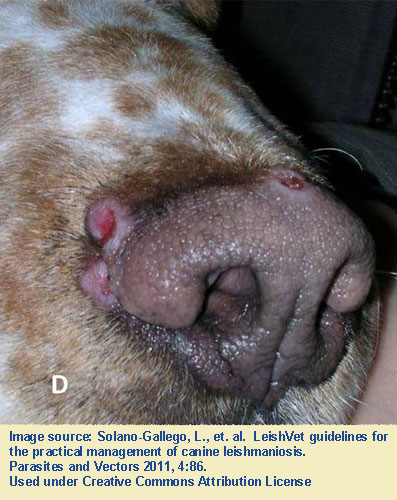Canine leishmaniosis, caused by the protozoan parasite Leishmania infantum, is a significant concern for dogs in endemic regions worldwide. Understanding this disease is crucial for dog owners, veterinarians, and public health authorities. Let’s delve into the causes, symptoms, and management of canine leishmaniosis.
Causes:
Canine leishmaniosis is primarily transmitted through the bite of infected sandflies, belonging to the genus Phlebotomus in the Old World and Lutzomyia in the New World. These sandflies acquire the Leishmania parasite by feeding on infected animals, such as dogs, rodents, or humans. Once infected, sandflies can transmit the parasite to other animals, perpetuating the cycle.
Symptoms:
The clinical presentation of canine leishmaniosis can vary widely, ranging from asymptomatic to severe manifestations. Common symptoms include:
- Skin lesions: These may appear as ulcers, nodules, or crusts, typically localized around the head, ears, and limbs.
- Lethargy and weakness: Infected dogs may exhibit reduced activity levels and overall weakness.
- Weight loss: Unexplained weight loss is a common symptom in dogs with leishmaniosis.
- Enlarged lymph nodes: Swollen lymph nodes, particularly around the neck and limbs, may be observed.
- Renal failure: In severe cases, renal dysfunction can occur, leading to increased thirst, excessive urination, and fluid retention.
Diagnosis:
Diagnosing canine leishmaniosis requires a combination of clinical signs, laboratory tests, Veterinary Rapid Test (here) and, in some cases, molecular techniques. Common diagnostic methods include :
- Serology: Blood tests to detect antibodies against Leishmania antigens availables at www.biofast.uk/
- Polymerase Chain Reaction (PCR): Molecular techniques to detect Leishmania DNA in blood, tissues, or bone marrow.
- Clinical examination: Evaluation of clinical signs, such as skin lesions and enlarged lymph nodes.
Management:
Management of canine leishmaniosis focuses on controlling clinical signs, reducing parasitic burden, and preventing transmission. Treatment options may include:
- Medications: Antiprotozoal drugs, such as antimonials, allopurinol, or miltefosine, to reduce parasite load and control symptoms.
- Symptomatic treatment: Supportive therapy to manage specific clinical signs, such as skin lesions or renal dysfunction.
- Prevention: Measures to reduce exposure to sandflies, such as using insect repellents, keeping dogs indoors during peak biting times, and environmental control of sandfly breeding sites.
Conclusion:
Canine leishmaniosis is a complex disease with varying clinical presentations and management challenges. Early diagnosis, effective treatment, and preventive measures are essential for controlling this disease and protecting canine health Bio FAST. Dog owners should remain vigilant, especially in endemic areas, and consult with veterinarians for proper management and prevention strategies.
Stay informed, stay proactive, and together, we can combat canine leishmaniosis and promote the health and well-being of our furry companions.
Source: www.bio-fast.com



